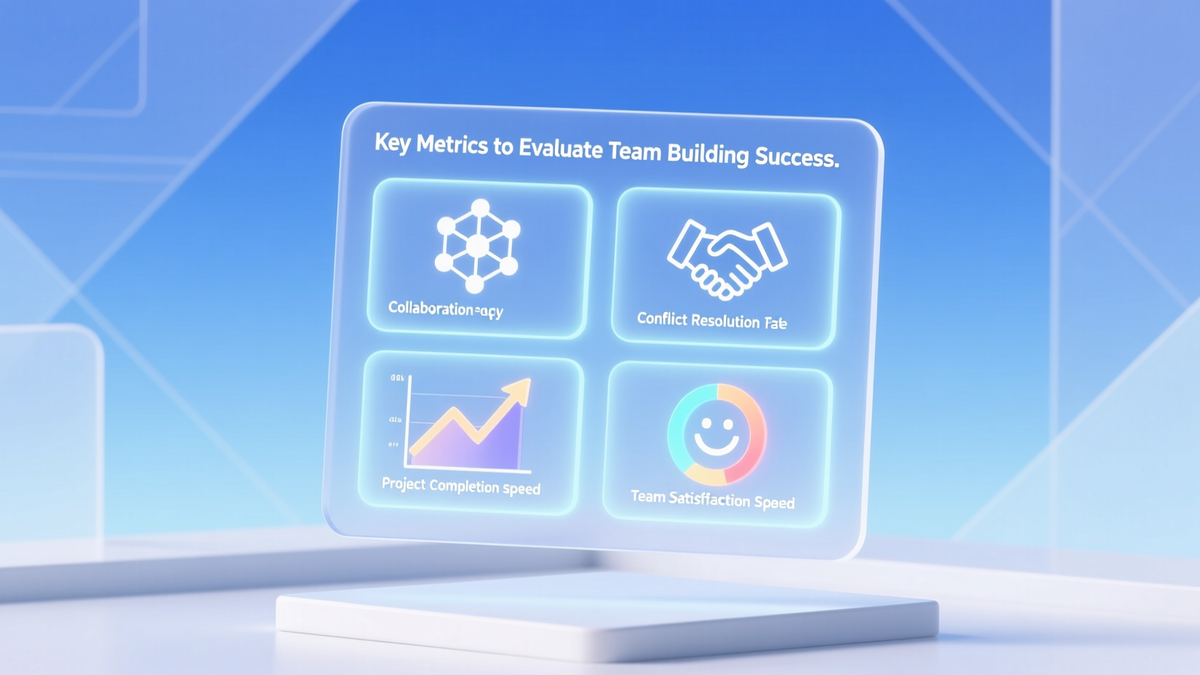
How to Measure Team Building Success: Metrics That Matter
Discover proven metrics and tools to measure team building success. Learn how to evaluate team cohesion, workplace culture, and collaboration effectiveness with real examples and actionable insights.
Introduction: Beyond the Fun – Why Measuring Team Building Matters

Imagine investing time and resources into a ropes course, ice breakers, and collaborative games, only to wonder: Did this actually strengthen our team? In today’s fast-paced workplaces, team building isn’t just about fun—it’s a strategic investment. This post reveals how to measure its true impact, using data-driven metrics and real-world examples.
 [IMAGE_PLACEHOLDER_1]
[IMAGE_PLACEHOLDER_1]
Key Metrics to Evaluate Team Building Success
1. Team Performance Improvements
Track productivity metrics before and after team building. For example, a tech startup saw a 23% increase in project delivery speed after implementing weekly collaborative workshops (Source: Harvard Business Review).
2. Employee Engagement Surveys
Use pre- and post-event surveys to gauge shifts in morale. Look for keywords like “trust,” “communication,” and “belonging.” Google’s Project Aristotle found psychological safety was the #1 predictor of team success—measurable through anonymous feedback.
3. Retention Rates
Strong team bonds reduce turnover. According to SHRM, employees with strong workplace relationships are 50% more likely to stay. Compare attrition rates in teams that participated in bonding activities vs. those that didn’t.
4. Collaboration Effectiveness
Measure cross-departmental project success rates or peer-to-peer recognition. Salesforce attributes its 91% employee satisfaction score to tools like Slack channels dedicated to team wins.
Tools and Methods for Tracking Impact
1. Surveys and Feedback Forms
- Tools: Qualtrics, SurveyMonkey
- Example: Zappos tracks “culture fit” via post-activity surveys, linking scores to promotions.
2. Behavioral Observation
Monitor interactions during meetings or projects. Do quieter team members speak up more? Microsoft’s hackathons revealed 30% more junior developers contributed ideas post-event.
[IMAGE_PLACEHOLDER_2]3. KPI Alignment
Link team building to business outcomes. A retail chain tied store-level team-building exercises to a 15% rise in customer satisfaction scores.
Case Study: How One Company Turned Metrics into Action
Challenge: A remote marketing agency struggled with siloed teams.
Solution: Virtual ice breakers and quarterly in-person retreats.
Results: 40% faster onboarding for new hires, 25% increase in cross-team campaigns.
[IMAGE_PLACEHOLDER_3]Common Pitfalls and How to Avoid Them
- Ignoring Soft Skills: Track empathy and conflict resolution through 360-degree reviews.
- Short-Term Focus: Measure changes over 6–12 months. Amazon’s “Working Backwards” method evaluates team dynamics quarterly.
- Overlooking Fun: Gallup reports engaged teams are 21% more profitable—don’t sacrifice enjoyment for data.
Actionable Tips for Immediate Impact
- Start with clear objectives: “Improve communication” vs. vague goals.
- Combine quantitative (surveys) and qualitative (interviews) data.
- Celebrate wins publicly: Share metrics like “team cohesion score” in all-hands meetings.
Conclusion: Building Better Teams Starts with Measurement
Measuring team building success isn’t just about numbers—it’s about understanding what makes your team thrive. By combining data with empathy, you’ll create a workplace culture where collaboration isn’t forced but flourishes naturally. Ready to assess your next event? Start with one metric, track it consistently, and watch your team grow.
Last updated: November 16, 2025